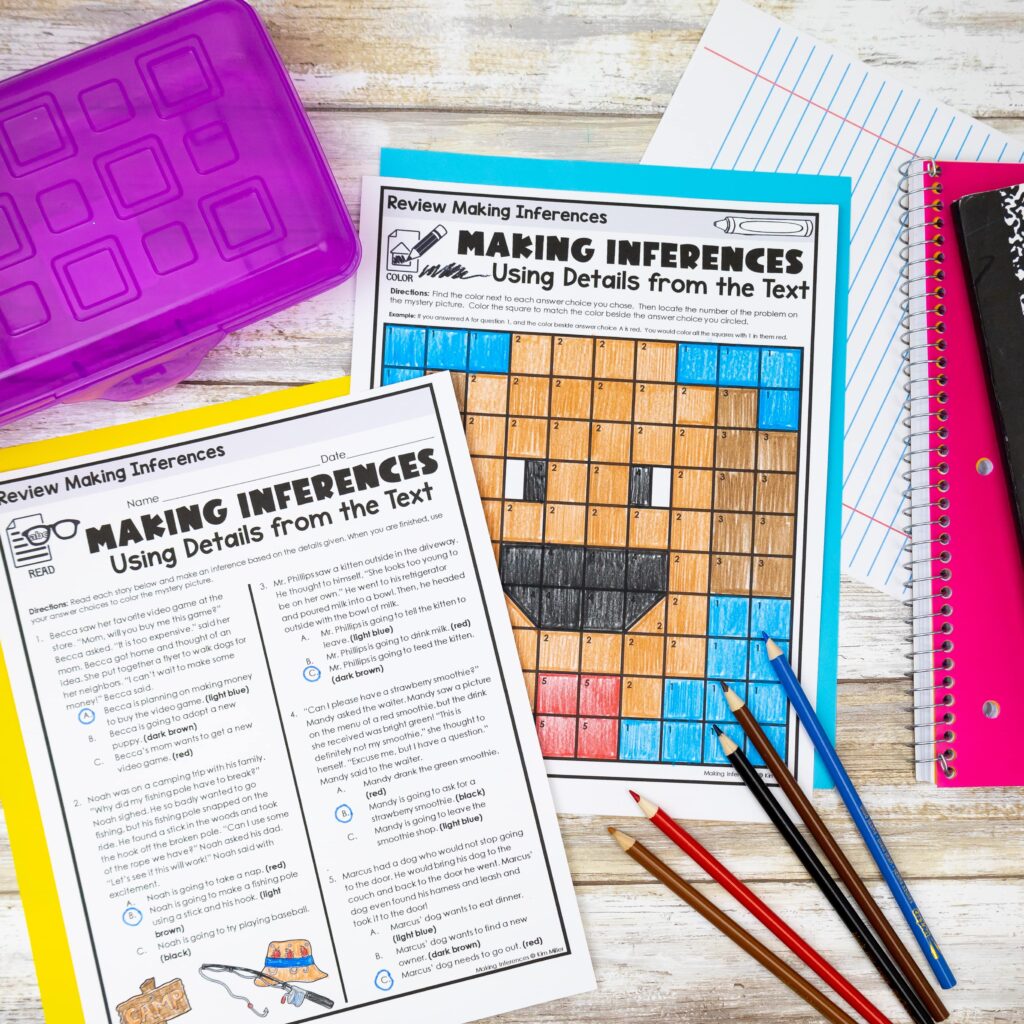How to Teach Making Inferences
Teaching your students how to make inferences is essential to unlocking their reading potential. This challenging skill requires sharp critical thinking and the ability for readers to understand more than just what’s written on paper. Inferencing is a concept often referred to as “reading between the lines.” If you are having difficulty teaching this important lesson, here are some helpful tips. These five steps will take your students from struggling with inferencing skills to becoming masters!

What is inferencing?
Before diving into how to teach this skill, make sure your students understand the concept of inferencing. Inferencing is when readers use clues from the text to draw conclusions or predict what may happen next in the story. For example, if a character is angry and there are storm clouds in the background, readers can infer that the character will likely have an emotional outburst. For students to become engaged readers and understand the stories they read, they must learn how to make inferences.

Steps for Teaching Inferencing:
- Begin by introducing the concept with a short story or passage, highlighting any inference clues that can be drawn from it. Ask your students to make inferences about what might happen next in the story. This will allow them to practice their skills and help build confidence as they get started.
- Model, model, model! Provide concrete examples of how to use information from the text to come up with logical predictions and conclusions. Demonstrate for your students how to read between the lines and think critically about the text.
- Break down difficult passages into smaller chunks. Ask your students questions to help them determine what’s happening in the story using context clues from the text or illustrations. Encourage them to think outside the box and draw their own conclusions.
- Use sentence starters. Provide your students with sentence starters such as “I can infer…” or “Based on this clue…” to help them get started when making inferences. Sentence starters allow them to focus on understanding what the text is saying rather than trying to come up with something original. It also shows them specific steps and tools they can use to make an inference. Grab my free inferencing question starters below!
- Provide practice materials and activities. Students need to practice making inferences with various texts. Give your students short passages, stories, comic strips, and other materials they can read as they practice making inferences.
Why is inferencing hard to teach?
Unlike so many skills we teach in reading, inferencing is something that can’t be simply taught in a systematic or formulaic way. Instead, it requires students to use their critical thinking skills and to tap into their prior knowledge to make deductions about the text. This reading skill can be frustrating for some students and challenging for teachers to manage in a whole-class setting.
By helping your students understand WHAT to focus on, you are making it easy to find the text evidence that will help them make strong inferences while reading.
Let’s Recap! Five Ways to Teach Inferences
- Use short stories to introduce and practice making inferences.
- Model inferencing with concrete examples.
- Break down difficult passages into smaller chunks.
- Provide students with sentence starters to help them get started making inferences.
- Provide plenty of practice activities and materials that focus on making inferences.
Your students’ ability to make informed inferences is an invaluable tool for the classroom. With these ideas and classroom activities, you can help your students sharpen their inference-making skills and become even more successful learners.
Pin for Later!
Use this blog post to unlock powerful tools for teaching your students how to make insightful inferences. Save these teaching ideas and activities so you can help your students become inference experts.



